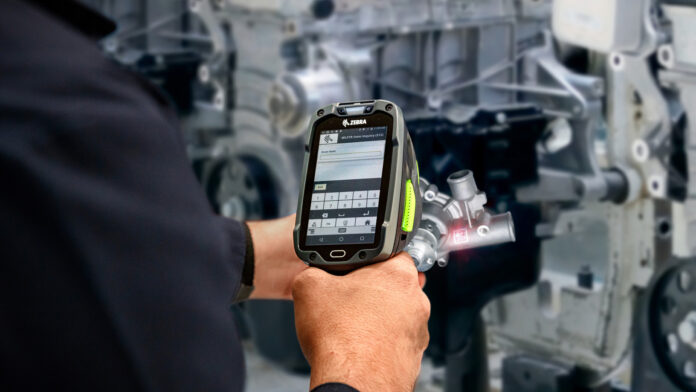NTT Data, the global system integrator division of Japanese telecoms group NTT, has signed a multi-year deal with US device maker Zebra Technologies, which has acquired a kind of Apple-like aura in the industrial sector for its specialist mobile devices, to solve continuing challenges with patchy supply and range of compatible 5G devices for private cellular networks. The pair will “co-innovate to drive the adoption of 5G devices”, they said.
They are targeting private 5G devices for the manufacturing, healthcare, and logistics industries. They mentioned the automotive industry, too – whether that is automotive manufacturing, automotive fleet and logistics solutions, or automotive driving technologies is unclear. But a statement suggested their focus is on the varied Industry 4.0 sector. “The two companies will enable intelligent asset tracking… in industrial and enterprise deployments,” it said.
The deal means Zebra Technologies is established as a “strategic partner” in NTT Data’s “device as-a-service” practice. Talk about innovation and co-innovation, as well as “new connectivity solutions”, suggests the duo will look to bring original bespoke 5G hardware solutions to market, also; but this is not made explicit in the press note. Instead, it sounds more like a go-to-market alignment to ensure NTT customers get the latest devices and updates.
The statement goes: “Available globally, customers will benefit from continual modernization of device deployments and the ability to harness new connectivity solutions with a leading suite of Wi-Fi [and] private LTE and 5G compatible devices… … The two companies aim to make the low latency and high-security features of private 5G enabled devices easily accessible to frontline workers in the automotive, manufacturing, healthcare, and logistics industries.”
The UK-headquartered SI’s is offering a full service proposition for private 5G devices, covering planning, procurement, configuration, deployment, support, analytics, repairs, and upgrades. Service plans, including device rentals, are available on a per-monthly per-user subscription. The firm announced a deal with Qualcomm in late 2023 to invest in and accelerate the development of the 5G device ecosystem to facilitate private 5G adoption.
It stated: “[A] critical barrier to private 5G adoption has been the availability of 5G devices for enterprises. This partnership will bridge this gap for connected devices in the enterprise private 5G market.” It quoted a forecast from analyst house Omdia that the private 5G market will grow by about 35 percent over the next four years, and be worth about $10 billion by 2028. “More connectivity is needed to support Industry 4.0… [and] AI,” it said.
At the same time, NTT Data has said it has deployed a private 5G network for US-based Hyster-Yale Group, a manufacturer of lift trucks and aftermarket parts, which has been populated with devices from Zebra Technologies on an NTT service subscription. “The network will work with Zebra’s handheld mobile computers and tablets to track assets and materials as they enter and exit manufacturing sites,” said NTT.
There was no other detail about the private 5G deployment at Hyster-Yale Group. But Pierluigi Mastroddi, director of IT infrastructure services at the firm, said the NTT/Zebra tie-up afforded “much more SKU customization within a standard device set”.
Shahid Ahmed, group vice president for edge services at NTT DATA, said the deal “underscores our dedication to empowering enterprises with transformative capabilities that propel edge and private 5G use cases.” Julie Johnson, general manager of enterprise mobile computing at Zebra Technologies, said it “underscores our commitment to bring customers the latest innovations powered by Wi-Fi [and] private LTE/5G networks.”
Zebra Technologies issued Industry 4.0 market research this week that says most manufacturing companies do not have a live view of production in their factories – which, of course, its ruggedised handheld and wearable computing, scanning, and sensing devices provide. But it warned that the sector’s big hopes about AI-assisted automation and efficiency are unrealistic without fixing its base-line challenge of asset and system ‘visibility’.

